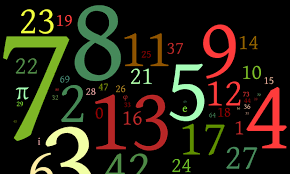 This week, we will focus on an example of how to setup an analytical reasoning (logic games) question. Our practice question will be from the June 2007 LSAT.
This week, we will focus on an example of how to setup an analytical reasoning (logic games) question. Our practice question will be from the June 2007 LSAT.
Law School News and LSAT Strategy
Stay current with the latest law school admissions news and proven LSAT strategies.
Posts by Dhara Shah:
LSAT Tip of the Week: Analytical Reasoning Practice Problem #2
LSAT Test Prep
LSAT Prep
LSAT mindset
Getting in to Law School
lsat logical reasoning
lsat analytical reasoning
LSAT practice problems
 This week, we will focus on an example of how to setup an analytical reasoning (logic games) question. Our practice question will be from the June 2007 LSAT.
This week, we will focus on an example of how to setup an analytical reasoning (logic games) question. Our practice question will be from the June 2007 LSAT.
LSAT Tip of the Week: Analytical Reasoning Practice Problem #1
LSAT Test Prep
LSAT Prep
LSAT mindset
Getting in to Law School
lsat logical reasoning
lsat analytical reasoning
LSAT practice problems
 This week, we will focus on an example of how to setup an analytical reasoning (logic games) question. Our practice question will be from the June 2007 LSAT.
This week, we will focus on an example of how to setup an analytical reasoning (logic games) question. Our practice question will be from the June 2007 LSAT.
LSAT Tip of the Week: Logical Reasoning Practice Question #2
 This week, we will go over a practice problem from the Logical Reasoning Section of the June 2007 LSAT.
This week, we will go over a practice problem from the Logical Reasoning Section of the June 2007 LSAT.
LSAT Tip of the Week: Logical Reasoning Practice Question #1
 This week, we will go over a practice problem from the Logical Reasoning Section of the June 2007 LSAT.
This week, we will go over a practice problem from the Logical Reasoning Section of the June 2007 LSAT.
LSAT Tip of the Week: Non-Conditional Questions
LSAT Test Prep
LSAT Prep
LSAT mindset
Getting in to Law School
improve my time on the LSAT
LSAT non conditional questions
A common question type you will see for a logic game in the logical reasoning section will be non-conditional questions. Non-conditional questions can be viewed as the...
